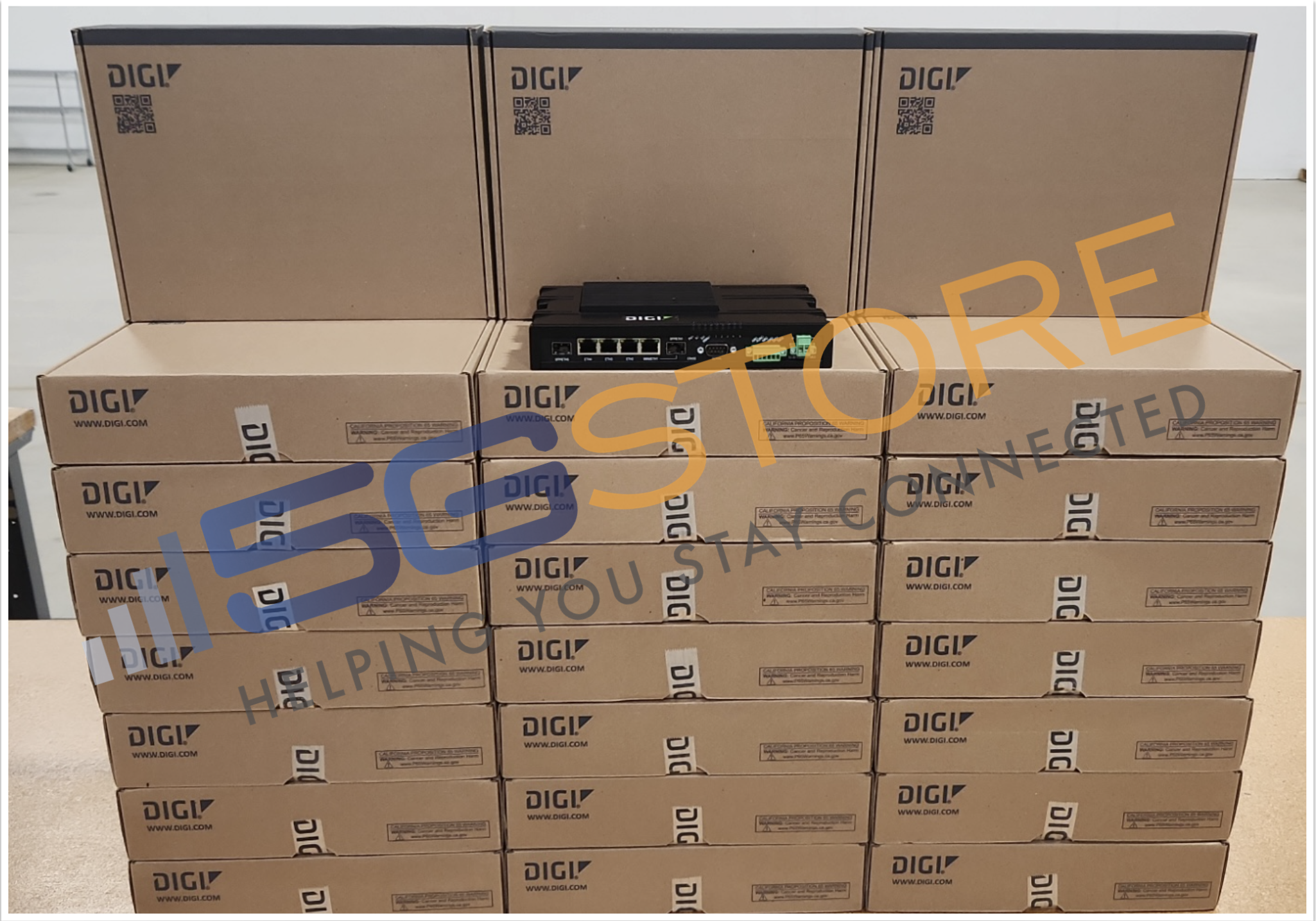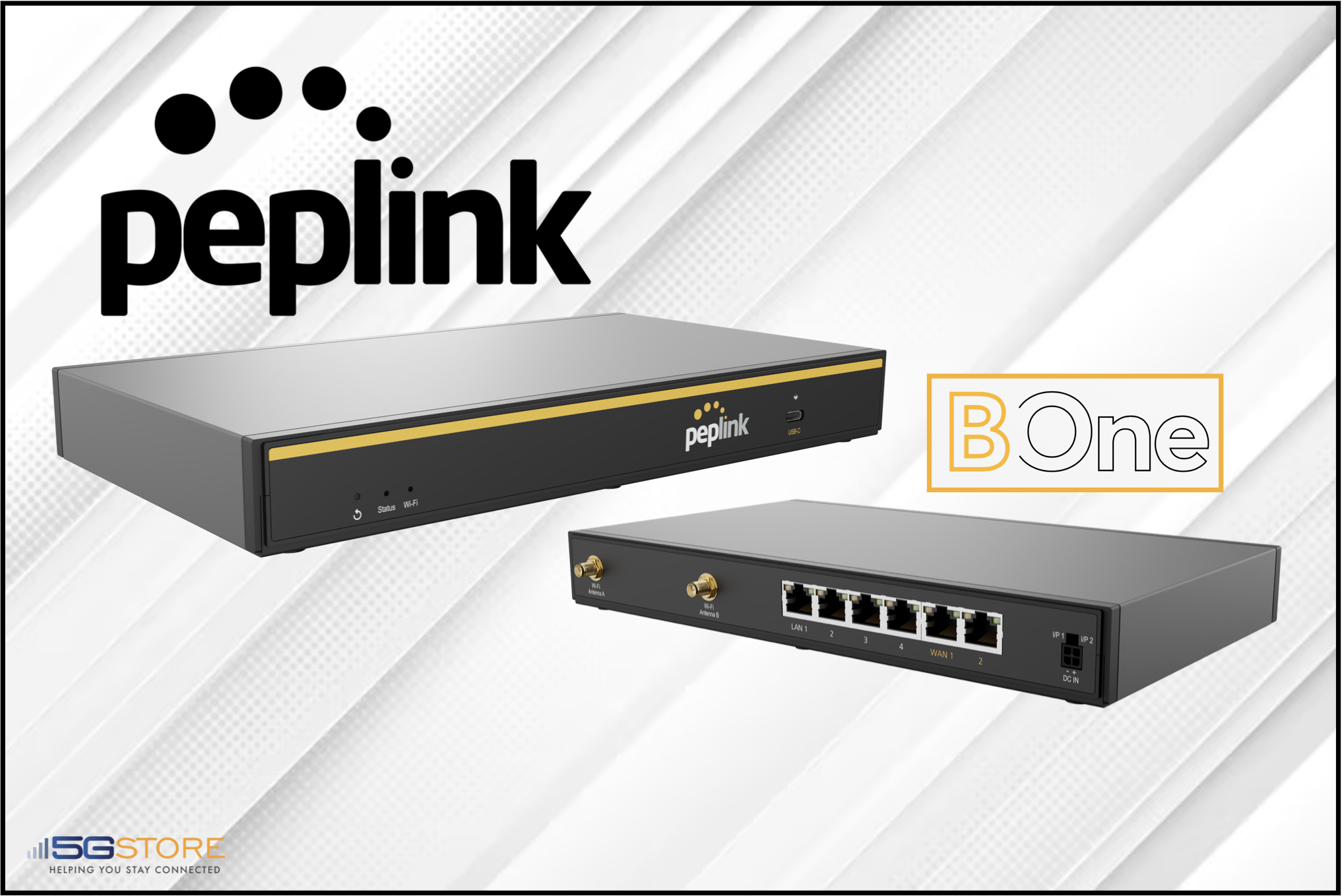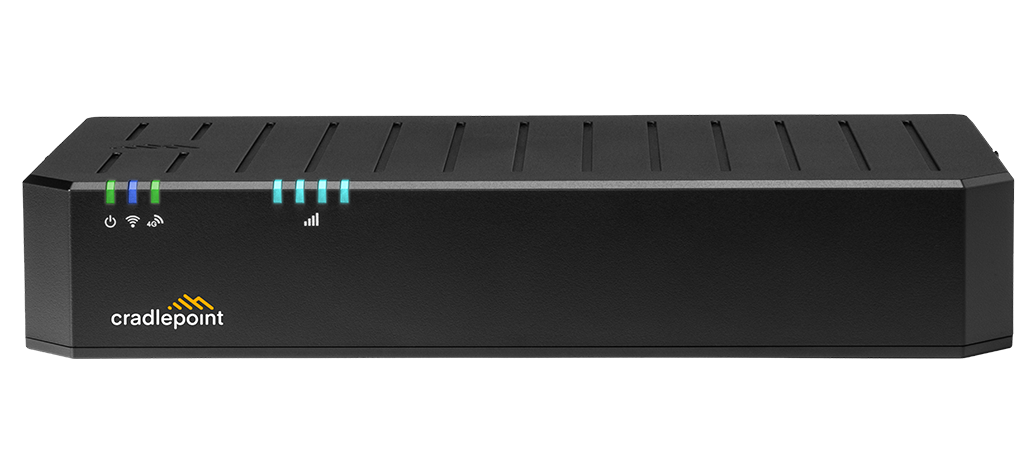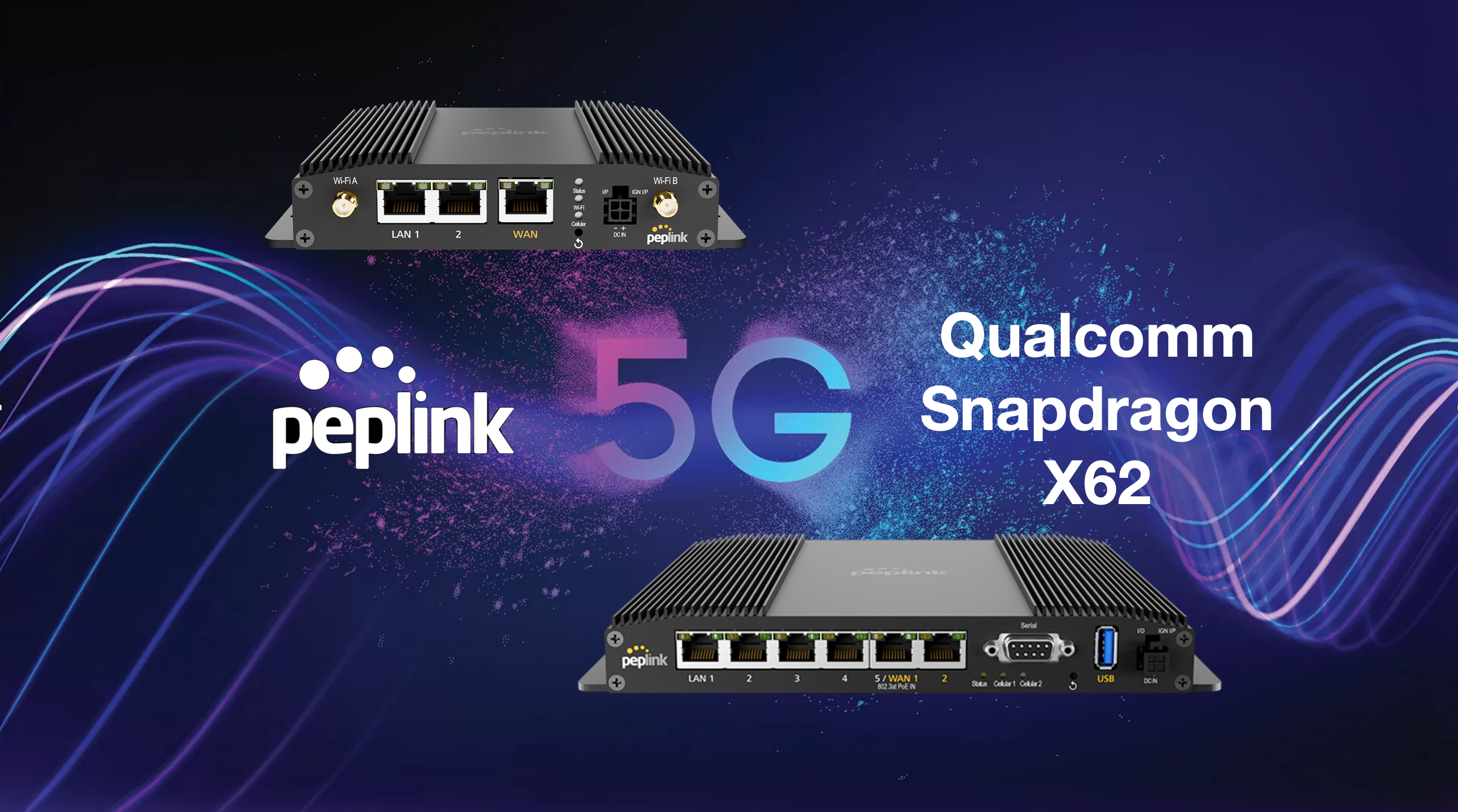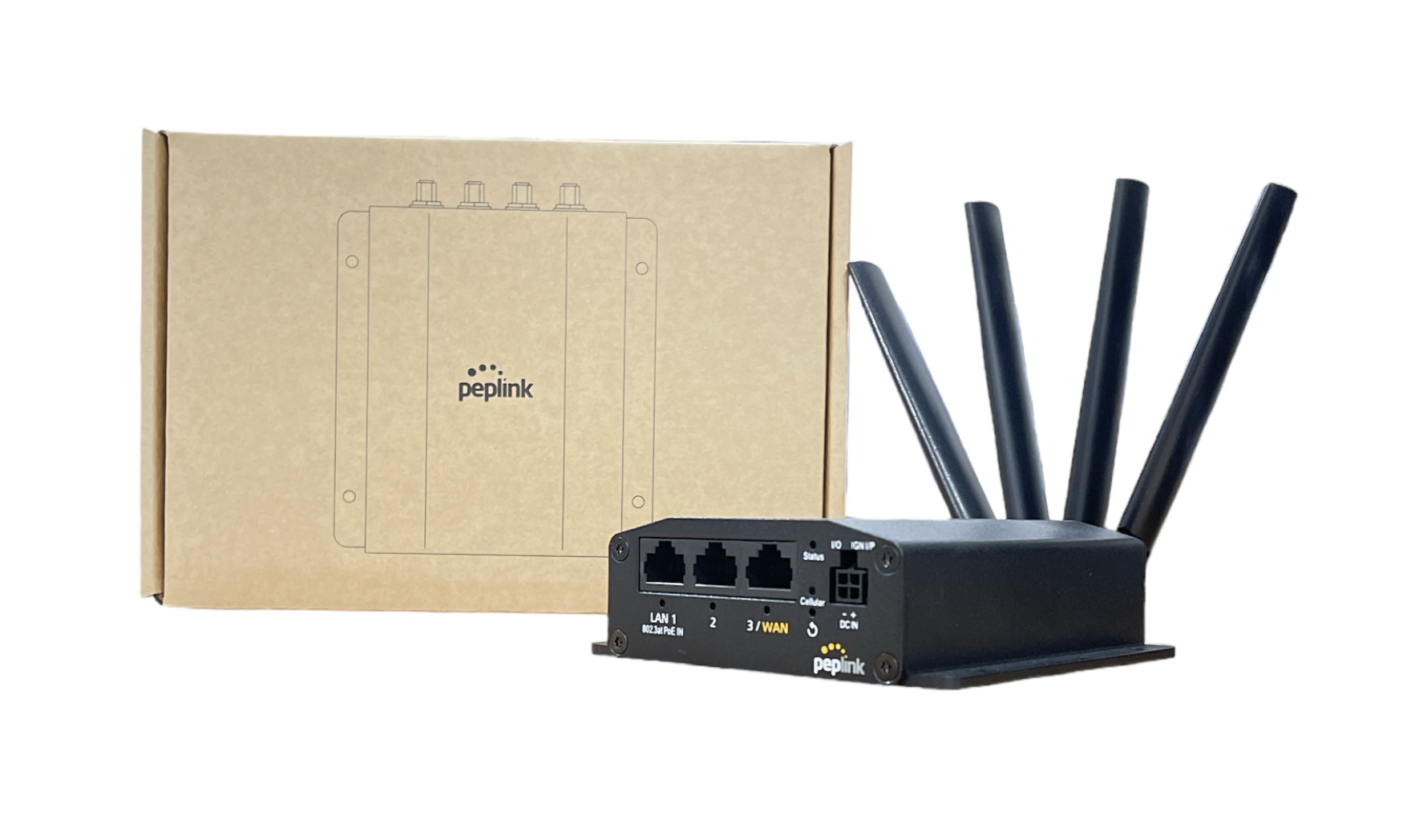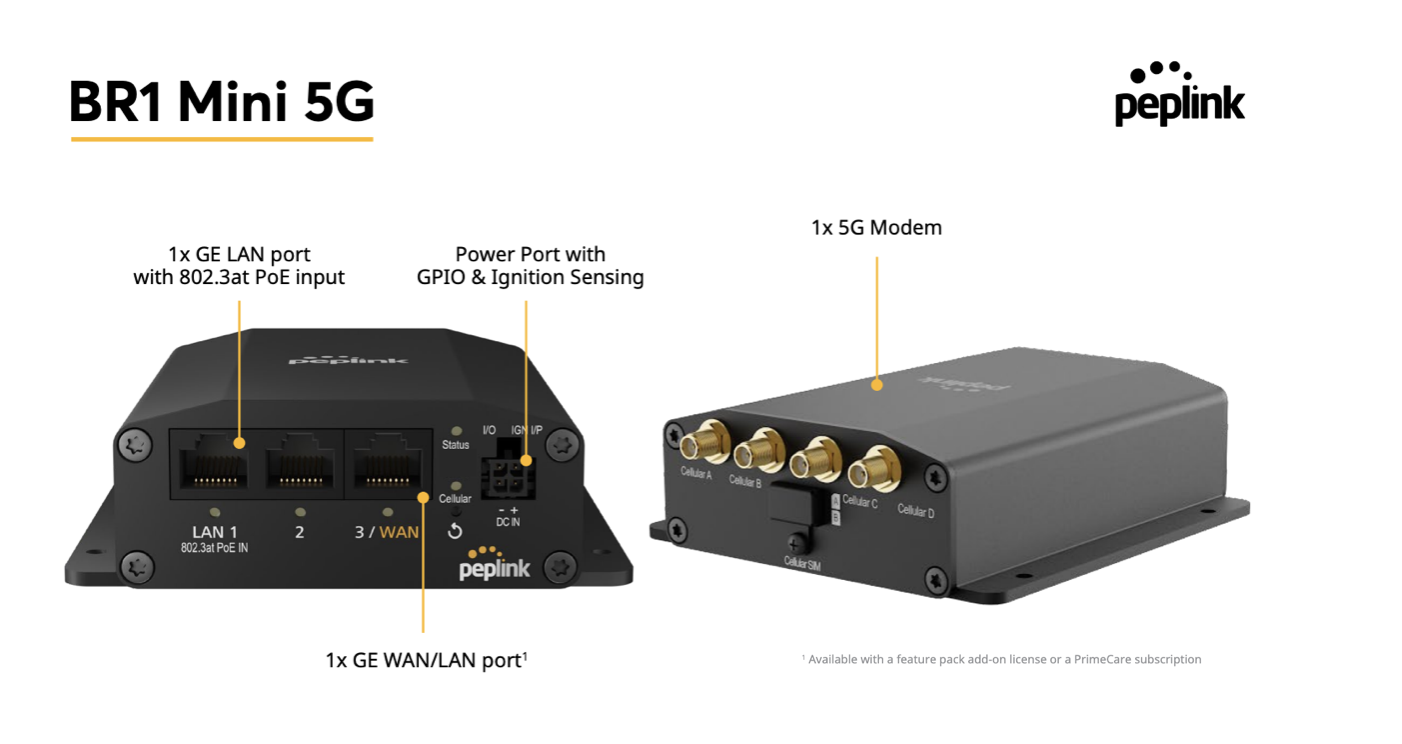As technology continues to evolve, so does the Peplink product line of routers. The Peplink B One (B-ONE-T-PRM) has just emerged and is already showing off to be a powerhouse. It seamlessly combines the best features of Peplink’s renowned Pepwave Surf SOHO and Peplink Balance 20 routers. The Surf SOHO MK3 in particular was one of the most reviewed products here at 5Gstore.com. Even with such a great following, the Surf SOHO MK3 was discontinued in the fall of 2022.
Unlike the next best thing, the Peplink Balance 20X, the Surf SOHO MK3 lacked a built-in cellular 4G/5G modem. This made more sense to users looking for a low-cost, reliable, multi-WAN solution. So with the Surf SOHO, as well as the Balance 20 gone, it leaves room for the B One to come in and provide a SOHO like solution for those in need. The Peplink B One stands out above the Surf SOHO MK3 with its improved speeds, enterprise software features, and robust connectivity options.
Improved Speeds and WiFi Excellence
The Peplink B One boasts impressive throughput speeds of up to 1Gbps, catering to the needs of 1 to 150 users. It’s equipped with built-in WiFi 6 technology, providing advanced wireless capabilities for both WiFi WAN and/or WiFi AP connections. This ensures a fast and reliable internet experience for all connected devices. If we compare this to the Surf SOHO, it’s quite an increase in speed from 120 Mbps up to a full gigabit. The SOHO also only supported WiFi 5 technology, so users planning on upgrading should see better performance overall.
Enterprise Software Features for Enhanced Control
Efficiently separate devices into Virtual LANs, which enhance network management and security. 4 total LAN ports are available for these connections, but note one of the WAN ports is convertible into a 5th LAN Port (this requires special firmware from Peplink). If WiFi connections are required, you may further secure your network by creating multiple SSIDs for different purposes such as personal, guest, and IoT.
The B One also has a built-in WiFi access point (AP) that supports 2×2 MiMO connections. If you find this doesn’t provide enough range for your location, seamlessly integrate external WiFi APs. Through the WLAN Controller, you’ll not only have extended coverage and performance, but enhanced control over your wireless local network.
Robust & Reliable Connectivity
Aside from the 2 wired WAN ports, you can provide your network redundancy by connecting a USB cellular modem or a nearby WiFi hotspot (using WiFi WAN – 2.4GHz or 5GHz). This can even be an Android phone or iPhone hotspot. Note that unlike the previously mentioned Peplink hardware, the B One uses a USB-C type port rather than type A. While most USB cellular modems use type A, modern cell Android, iPhones and Peplink’s own MAX Adapters utilize type C.
Be aware that not all USB cellular modems are created alike. If you find you cannot connect yours to the B One, Peplink support will work with you and attempt to get it functioning. For more information on modems that are known to work with the Peplink routers, check out Peplink’s supported list of USB modems.
With the inclusion of PrimeCare warranty, the Peplink B One supports SpeedFusion technology. This enables the use of Hot Failover, WAN Smoothing, and bonding of multiple internet connections for a more reliable and faster internet feed. This can be any combination of Internet connections, whether it be a wired WAN, USB WAN or WiFi WAN. That’s a total of 5 WAN connections that the Peplink B One can support right out of the box! It is unknown at this time if a LAN port can be used as a 3rd WAN port, but we will update this article accordingly.
Easy Integration with Starlink and Fixed Wireless Access (FWA)
The router supports dual WAN ports, which is where you can connect your Starlink dish or Fixed Wireless Access (FWA) cellular modem/ router. Note that the Peplink does not have an integrated satellite or cellular LTE/ 5G modem, but can connect to them externally. Simply take an Ethernet cable from your Starlink dish, or fixed wireless modem, and connect it to one of the WAN ports on the Peplink B One.
When utilizing multiple WAN connections, you may optimize your network by bonding multiple Starlink connections together, or even one Starlink and one FWA connection. Keep in mind that this requires SpeedFusion connectivity, which is included with the PrimeCare warranty plan.
If bonding is not necessary to your application, you can still achieve optimal performance by using Load Balancing. Balance Starlink with other internet services like 5G/LTE, Cable, Fiber, and Fixed Wireless Access.
Included Management and Cloud Integration
Effortlessly manage your router locally or through Peplink’s cloud manager service, InControl 2, included for 1 year with the PrimeCare warranty. When linked to your devices, InControl 2 consolidates data to produce informative reports covering every facet of your network. With just one screen, you can deploy configurations to all your endpoints. For a more in-depth analysis, you can remotely connect to the web admin of any device within your network.
InControl enables you to streamline configuration processes, reduce the need for on-site visits, monitor your network’s status efficiently, and proactively address emerging issues with speed and accuracy. Furthermore, with the InTouch feature, you can easily access devices connected behind your Peplink B One router.
That’s not all the InControl 2 cloud management offers. With regular backups of your configuration, you can always rest assured that any changes can quickly be undone as needed. In a future update, you may even be able to upload saved configurations from different Peplink models onto the B One. We’ll update this article as we find out more information.
Additional Specifications and Notes
- Dimensions:
- 10.31 x 6.33 x 1.31 inches (262 x 161 x 33.5mm)
- The Peplink B One package includes:
- 2x Dual Band Wi-Fi Antennas
- 1x 12V 3A 4 Pin Power Supply
- PrimeCare warranty renewal for 1 year is available for $49
- In addition to SpeedFusion features, PrimeCare (PRM-A-1Y / PCP-A-1Y) includes a hardware warranty, support and cloud management. Without PrimeCare, the router functions normally, less these features and cloud control.
- For those looking to renew the PrimeCare for longer periods, check out product code PRM-A-2Y or PCP-A-2Y for 2 years, and either PRM-A-4Y or PCP-A-4Y for 4 years.
In conclusion, the Peplink B One router delivers on its promise of exceptional speed, reliability, and flexibility. Whether you’re looking for a replacement to your Surf SOHO or Balance 20 router, advanced enterprise features, or multi-WAN connectivity, the B One stands as a versatile and robust networking solution. With its compact design and easy management options, it’s a reliable choice for businesses and users seeking top-tier performance.
Reach out to the 5Gstore sales team today to place your order for the Peplink B One and be sure to check out our Peplink B One FAQ!
